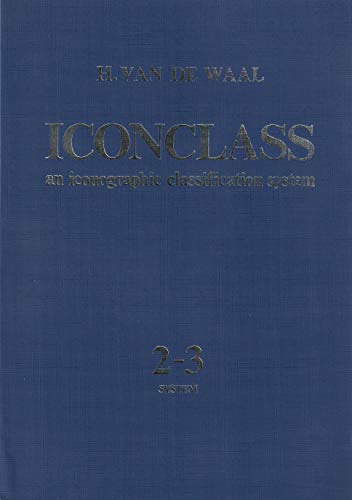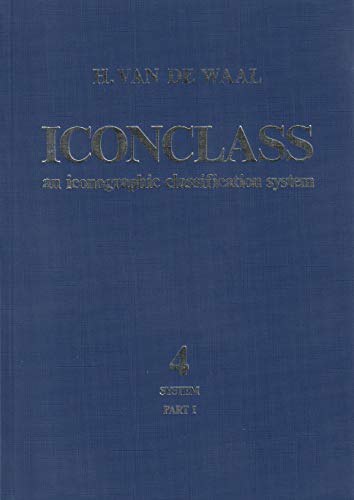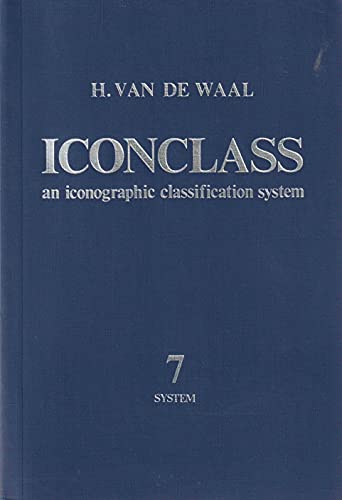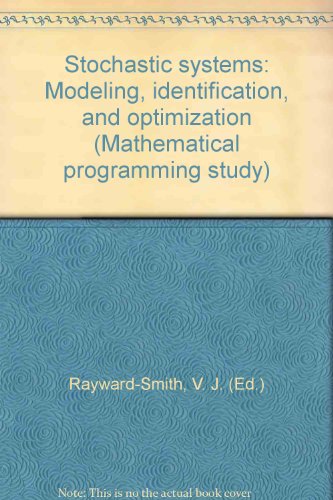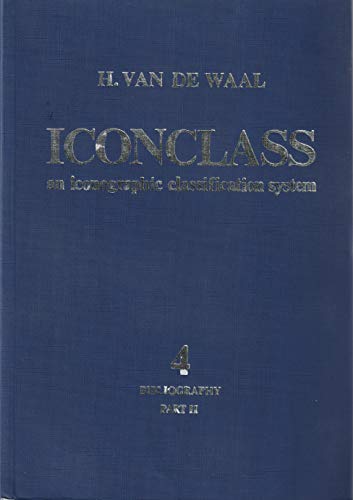waal henri (13 Ergebnisse)
Produktart
- Alle Produktarten
- Bücher (13)
- Magazine & Zeitschriften
- Comics
- Noten
- Kunst, Grafik & Poster
- Fotografien
- Karten
-
Manuskripte &
Papierantiquitäten
Zustand
- Alle
- Neu
- Antiquarisch/Gebraucht
Einband
- alle Einbände
- Hardcover
- Softcover (12)
Weitere Eigenschaften
- Erstausgabe
- Signiert
- Schutzumschlag
- Angebotsfoto (1)
Land des Verkäufers
Verkäuferbewertung
-
In memoriam Erwin Panofsky: March 30, 1892 - March 14, 1968.
ISBN 10: 0720482399ISBN 13: 9780720482393
Anbieter: Kloof Booksellers & Scientia Verlag, Amsterdam, Niederlande
Buch
Zustand: very good. Amsterdam : North-Holland Publishing Company,1972. Paperback. 20 pp. (Mededelingen der Koninklijke Nederlandse Akademie van Wetenschappen, Afd. Letterkunde. Nieuwe Reeks, deel 35, No. 6). Condition : very good copy. ISBN 9780720482393. Keywords : ART,
-
In memoriam Erwin Panofsky. March 30, 1892 - March 14, 1968. Mededelingen der Koninklijke Nederlandse Akademie van Wetenschappen; Bd. 35,6.
Verlag: Amsterdam, Noord-Hollandsche Uitg. Maatschappij, 1972
Anbieter: Antiquariat Bookfarm, Löbnitz, Deutschland
Buch
Ehem. Bibliotheksexemplar mit Bib.-Signatur und Stempel. GUTER Zustand, ein paar Gebrauchsspuren. Ex-library with stamp and library-signature on spine. GOOD condition, some traces of use. rtx Sprache: Englisch Gewicht in Gramm: 550.
-
Steps towards Rembrandt : collected articles 1937-1972.
Verlag: Royal Netherlands Academy of, 1974
ISBN 10: 0720482577ISBN 13: 9780720482577
Anbieter: Kloof Booksellers & Scientia Verlag, Amsterdam, Niederlande
Buch
Zustand: as new. Amsterdam : North-Holland,1974. Paperback. 292 p. Condition : as new copy. ISBN 9780720482577. Keywords : ART, Rembrandt.
-
Iconclass. An iconographic classification system. Bibliography 2-3 : Nature and Human Being, Man in General.
Verlag: North-Holland Pub. Co., 1973
ISBN 10: 0720482704ISBN 13: 9780720482706
Anbieter: Kloof Booksellers & Scientia Verlag, Amsterdam, Niederlande
Buch
Zustand: as new. Completed and edited by L.D. Couprie, R.H. Fuchs and E. Tholen. Amsterdam : North-Holland,1973. Paperback. 324 pp. Reprint. - ICONCLASSS is a specialized library classification designed for art and iconography. It was originally conceived by Henri van de Waal (1910-1972), and was further developed by a group of scholars after his death. Development based on Dewey Decimal system the Iconclass system is one of the largest classification system for cultural content and possibly the largest for visual arts content. Initially designed for historical imagery, it is now also used to create subject access to texts and to classify a wide range of images, including modern photography. At the moment it contains over 28,000 unique concepts (classification types) and has an entry vocabulary of 14,000 keywords. Like the Dewey Decimal Classification system, it has 10 main "divisions" or points of entry, and these are: 0. Abstract, Non-representational Art; 1. Religion and Magic; 2. Nature; 3. Human being, Man in general; 4. Society, Civilization, Culture; 5. Abstract Ideas and Concepts; 6. History; 7. Bible; 8. Literature; 9. Classical Mythology and Ancient History. Each division has 9 or 10 subdivisions, and so on. It can be consulted with the help of the freely available Iconclass 2100 browser. Iconclass was developed in the Netherlands as a standard classification for recording collections, with the idea of assembling huge databases that will allow the retrieval of images featuring particular details, subjects or other common factors. It was developed in the 1970s and was loosely based on the Dewey Decimal System because it was meant to be used in art library card catalogs. Usage in data records : the iconclass code represents a concept and objects can be assigned a code indicating that the object depicts that concept. For example, the iconclass code "71H7131" is for the subject of "Bathsheba (alone) with David's letter". The code is built from "7" for bible, "71" for "Old Testament", "71H" the "story of David", "71H7" for "David and Bathsheba", "71H71" for "David observing Bathsheba bathing", and "71H713" for "Bathsheba receiving a letter from David". Condition : as new copy. ISBN 9780720482706. Keywords : ART, ICONCLASS.
-
Iconclass. An iconographic classification system. Bibliography 1 : Religion and Magic.
ISBN 10: 0444855939ISBN 13: 9780444855930
Anbieter: Kloof Booksellers & Scientia Verlag, Amsterdam, Niederlande
Buch
Zustand: as new. Completed and edited by L.D. Couprie, E. Tholen and G. Vellekoop. Amsterdam : North-Holland,1983. Paperback. 348 pp. Reprint. - ICONCLASSS is a specialized library classification designed for art and iconography. It was originally conceived by Henri van de Waal (1910-1972), and was further developed by a group of scholars after his death. Development based on Dewey Decimal system the Iconclass system is one of the largest classification system for cultural content and possibly the largest for visual arts content. Initially designed for historical imagery, it is now also used to create subject access to texts and to classify a wide range of images, including modern photography. At the moment it contains over 28,000 unique concepts (classification types) and has an entry vocabulary of 14,000 keywords. Like the Dewey Decimal Classification system, it has 10 main "divisions" or points of entry, and these are: 0. Abstract, Non-representational Art; 1. Religion and Magic; 2. Nature; 3. Human being, Man in general; 4. Society, Civilization, Culture; 5. Abstract Ideas and Concepts; 6. History; 7. Bible; 8. Literature; 9. Classical Mythology and Ancient History. Each division has 9 or 10 subdivisions, and so on. It can be consulted with the help of the freely available Iconclass 2100 browser. Iconclass was developed in the Netherlands as a standard classification for recording collections, with the idea of assembling huge databases that will allow the retrieval of images featuring particular details, subjects or other common factors. It was developed in the 1970s and was loosely based on the Dewey Decimal System because it was meant to be used in art library card catalogs. Usage in data records : the iconclass code represents a concept and objects can be assigned a code indicating that the object depicts that concept. For example, the iconclass code "71H7131" is for the subject of "Bathsheba (alone) with David's letter". The code is built from "7" for bible, "71" for "Old Testament", "71H" the "story of David", "71H7" for "David and Bathsheba", "71H71" for "David observing Bathsheba bathing", and "71H713" for "Bathsheba receiving a letter from David". Condition : as new copy. ISBN 9780444855930. Keywords : ART, ICONCLASS.
Mehr Angebote von anderen Verkäufern bei ZVAB
Gebraucht ab EUR 38,95
-
Iconclass. An iconographic classification system. System 2-3 : Nature and Human Being. Man in General.
Verlag: North Holland Publishers, 1974
ISBN 10: 0720482712ISBN 13: 9780720482713
Anbieter: Kloof Booksellers & Scientia Verlag, Amsterdam, Niederlande
Buch
Zustand: as new. Completed and edited by L.D. Couprie, R.H. Fuchs and E. Tholen. Amsterdam : North-Holland,1974. Paperback. 103 pp. Original edition. - ICONCLASSS is a specialized library classification designed for art and iconography. It was originally conceived by Henri van de Waal (1910-1972), and was further developed by a group of scholars after his death. Development based on Dewey Decimal system the Iconclass system is one of the largest classification system for cultural content and possibly the largest for visual arts content. Initially designed for historical imagery, it is now also used to create subject access to texts and to classify a wide range of images, including modern photography. At the moment it contains over 28,000 unique concepts (classification types) and has an entry vocabulary of 14,000 keywords. Like the Dewey Decimal Classification system, it has 10 main "divisions" or points of entry, and these are: 0. Abstract, Non-representational Art; 1. Religion and Magic; 2. Nature; 3. Human being, Man in general; 4. Society, Civilization, Culture; 5. Abstract Ideas and Concepts; 6. History; 7. Bible; 8. Literature; 9. Classical Mythology and Ancient History. Each division has 9 or 10 subdivisions, and so on. It can be consulted with the help of the freely available Iconclass 2100 browser. Iconclass was developed in the Netherlands as a standard classification for recording collections, with the idea of assembling huge databases that will allow the retrieval of images featuring particular details, subjects or other common factors. It was developed in the 1970s and was loosely based on the Dewey Decimal System because it was meant to be used in art library card catalogs. Usage in data records : the iconclass code represents a concept and objects can be assigned a code indicating that the object depicts that concept. For example, the iconclass code "71H7131" is for the subject of "Bathsheba (alone) with David's letter". The code is built from "7" for bible, "71" for "Old Testament", "71H" the "story of David", "71H7" for "David and Bathsheba", "71H71" for "David observing Bathsheba bathing", and "71H713" for "Bathsheba receiving a letter from David". Condition : as new copy. ISBN 9780720482713. Keywords : ART, ICONCLASS.
-
Iconclass. An iconographic classification system. System 4, Part 1 : Society, Civilization, Culture.
Verlag: North Holland Publishing, 1981
ISBN 10: 0720483336ISBN 13: 9780720483338
Anbieter: Kloof Booksellers & Scientia Verlag, Amsterdam, Niederlande
Buch
Zustand: as new. Completed and edited by L.D. Couprie, E. Tholen and G. van Caspel-Vellekoop. Amsterdam : North-Holland,1976. Paperback. 114 pp. Original edition. - ICONCLASSS is a specialized library classification designed for art and iconography. It was originally conceived by Henri van de Waal (1910-1972), and was further developed by a group of scholars after his death. Development based on Dewey Decimal system the Iconclass system is one of the largest classification system for cultural content and possibly the largest for visual arts content. Initially designed for historical imagery, it is now also used to create subject access to texts and to classify a wide range of images, including modern photography. At the moment it contains over 28,000 unique concepts (classification types) and has an entry vocabulary of 14,000 keywords. Like the Dewey Decimal Classification system, it has 10 main "divisions" or points of entry, and these are: 0. Abstract, Non-representational Art; 1. Religion and Magic; 2. Nature; 3. Human being, Man in general; 4. Society, Civilization, Culture; 5. Abstract Ideas and Concepts; 6. History; 7. Bible; 8. Literature; 9. Classical Mythology and Ancient History. Each division has 9 or 10 subdivisions, and so on. It can be consulted with the help of the freely available Iconclass 2100 browser. Iconclass was developed in the Netherlands as a standard classification for recording collections, with the idea of assembling huge databases that will allow the retrieval of images featuring particular details, subjects or other common factors. It was developed in the 1970s and was loosely based on the Dewey Decimal System because it was meant to be used in art library card catalogs. Usage in data records : the iconclass code represents a concept and objects can be assigned a code indicating that the object depicts that concept. For example, the iconclass code "71H7131" is for the subject of "Bathsheba (alone) with David's letter". The code is built from "7" for bible, "71" for "Old Testament", "71H" the "story of David", "71H7" for "David and Bathsheba", "71H71" for "David observing Bathsheba bathing", and "71H713" for "Bathsheba receiving a letter from David". Condition : as new copy. ISBN 9780720483338. Keywords : ART, ICONCLASS.
-
Zustand: as new. Completed and edited by L.D. Couprie, E. Tholen and G. Vellekoop. Amsterdam : North-Holland,1977. Paperback. 108 pp. Original edition. - ICONCLASSS is a specialized library classification designed for art and iconography. It was originally conceived by Henri van de Waal (1910-1972), and was further developed by a group of scholars after his death. Development based on Dewey Decimal system the Iconclass system is one of the largest classification system for cultural content and possibly the largest for visual arts content. Initially designed for historical imagery, it is now also used to create subject access to texts and to classify a wide range of images, including modern photography. At the moment it contains over 28,000 unique concepts (classification types) and has an entry vocabulary of 14,000 keywords. Like the Dewey Decimal Classification system, it has 10 main "divisions" or points of entry, and these are: 0. Abstract, Non-representational Art; 1. Religion and Magic; 2. Nature; 3. Human being, Man in general; 4. Society, Civilization, Culture; 5. Abstract Ideas and Concepts; 6. History; 7. Bible; 8. Literature; 9. Classical Mythology and Ancient History. Each division has 9 or 10 subdivisions, and so on. It can be consulted with the help of the freely available Iconclass 2100 browser. Iconclass was developed in the Netherlands as a standard classification for recording collections, with the idea of assembling huge databases that will allow the retrieval of images featuring particular details, subjects or other common factors. It was developed in the 1970s and was loosely based on the Dewey Decimal System because it was meant to be used in art library card catalogs. Usage in data records : the iconclass code represents a concept and objects can be assigned a code indicating that the object depicts that concept. For example, the iconclass code "71H7131" is for the subject of "Bathsheba (alone) with David's letter". The code is built from "7" for bible, "71" for "Old Testament", "71H" the "story of David", "71H7" for "David and Bathsheba", "71H71" for "David observing Bathsheba bathing", and "71H713" for "Bathsheba receiving a letter from David". Condition : as new copy. ISBN 9780720483444. Keywords : ART, ICONCLASS.
-
Iconclass. An iconographic classification system. System 7 : Bible.
Verlag: Elsevier, 1982
ISBN 10: 0444855424ISBN 13: 9780444855428
Anbieter: Kloof Booksellers & Scientia Verlag, Amsterdam, Niederlande
Buch
Zustand: as new. Completed and edited by L.D. Couprie, E. Tholen and G. Vellekoop. Amsterdam : North-Holland,1981. Paperback. 275 pp. Original edition. - ICONCLASSS is a specialized library classification designed for art and iconography. It was originally conceived by Henri van de Waal (1910-1972), and was further developed by a group of scholars after his death. Development based on Dewey Decimal system the Iconclass system is one of the largest classification system for cultural content and possibly the largest for visual arts content. Initially designed for historical imagery, it is now also used to create subject access to texts and to classify a wide range of images, including modern photography. At the moment it contains over 28,000 unique concepts (classification types) and has an entry vocabulary of 14,000 keywords. Like the Dewey Decimal Classification system, it has 10 main "divisions" or points of entry, and these are: 0. Abstract, Non-representational Art; 1. Religion and Magic; 2. Nature; 3. Human being, Man in general; 4. Society, Civilization, Culture; 5. Abstract Ideas and Concepts; 6. History; 7. Bible; 8. Literature; 9. Classical Mythology and Ancient History. Each division has 9 or 10 subdivisions, and so on. It can be consulted with the help of the freely available Iconclass 2100 browser. Iconclass was developed in the Netherlands as a standard classification for recording collections, with the idea of assembling huge databases that will allow the retrieval of images featuring particular details, subjects or other common factors. It was developed in the 1970s and was loosely based on the Dewey Decimal System because it was meant to be used in art library card catalogs. Usage in data records : the iconclass code represents a concept and objects can be assigned a code indicating that the object depicts that concept. For example, the iconclass code "71H7131" is for the subject of "Bathsheba (alone) with David's letter". The code is built from "7" for bible, "71" for "Old Testament", "71H" the "story of David", "71H7" for "David and Bathsheba", "71H71" for "David observing Bathsheba bathing", and "71H713" for "Bathsheba receiving a letter from David". Condition : as new copy. ISBN 9780444855428. Keywords : ART, ICONCLASS.
-
Zustand: as new. Completed and edited by L.D. Couprie, E. Tholen and G. van Caspel-Vellekoop. Amsterdam : North-Holland,1975. Paperback. 218 pp. Original edition. - ICONCLASSS is a specialized library classification designed for art and iconography. It was originally conceived by Henri van de Waal (1910-1972), and was further developed by a group of scholars after his death. Development based on Dewey Decimal system the Iconclass system is one of the largest classification system for cultural content and possibly the largest for visual arts content. Initially designed for historical imagery, it is now also used to create subject access to texts and to classify a wide range of images, including modern photography. At the moment it contains over 28,000 unique concepts (classification types) and has an entry vocabulary of 14,000 keywords. Like the Dewey Decimal Classification system, it has 10 main "divisions" or points of entry, and these are: 0. Abstract, Non-representational Art; 1. Religion and Magic; 2. Nature; 3. Human being, Man in general; 4. Society, Civilization, Culture; 5. Abstract Ideas and Concepts; 6. History; 7. Bible; 8. Literature; 9. Classical Mythology and Ancient History. Each division has 9 or 10 subdivisions, and so on. It can be consulted with the help of the freely available Iconclass 2100 browser. Iconclass was developed in the Netherlands as a standard classification for recording collections, with the idea of assembling huge databases that will allow the retrieval of images featuring particular details, subjects or other common factors. It was developed in the 1970s and was loosely based on the Dewey Decimal System because it was meant to be used in art library card catalogs. Usage in data records : the iconclass code represents a concept and objects can be assigned a code indicating that the object depicts that concept. For example, the iconclass code "71H7131" is for the subject of "Bathsheba (alone) with David's letter". The code is built from "7" for bible, "71" for "Old Testament", "71H" the "story of David", "71H7" for "David and Bathsheba", "71H71" for "David observing Bathsheba bathing", and "71H713" for "Bathsheba receiving a letter from David". Condition : as new copy. ISBN 9780720483000. Keywords : ART, ICONCLASS.
-
Iconclass. An iconographic classification system. Bibliography 4, Part 2 : Society, Civilization, Culture.
Verlag: North Holland Publications, 1977
ISBN 10: 0720484200ISBN 13: 9780720484205
Anbieter: Kloof Booksellers & Scientia Verlag, Amsterdam, Niederlande
Buch
Zustand: as new. Completed and edited by L.D. Couprie, E. Tholen and G. Vellekoop. Amsterdam : North-Holland,1977. Paperback. 242 pp. Original edition. - ICONCLASSS is a specialized library classification designed for art and iconography. It was originally conceived by Henri van de Waal (1910-1972), and was further developed by a group of scholars after his death. Development based on Dewey Decimal system the Iconclass system is one of the largest classification system for cultural content and possibly the largest for visual arts content. Initially designed for historical imagery, it is now also used to create subject access to texts and to classify a wide range of images, including modern photography. At the moment it contains over 28,000 unique concepts (classification types) and has an entry vocabulary of 14,000 keywords. Like the Dewey Decimal Classification system, it has 10 main "divisions" or points of entry, and these are: 0. Abstract, Non-representational Art; 1. Religion and Magic; 2. Nature; 3. Human being, Man in general; 4. Society, Civilization, Culture; 5. Abstract Ideas and Concepts; 6. History; 7. Bible; 8. Literature; 9. Classical Mythology and Ancient History. Each division has 9 or 10 subdivisions, and so on. It can be consulted with the help of the freely available Iconclass 2100 browser. Iconclass was developed in the Netherlands as a standard classification for recording collections, with the idea of assembling huge databases that will allow the retrieval of images featuring particular details, subjects or other common factors. It was developed in the 1970s and was loosely based on the Dewey Decimal System because it was meant to be used in art library card catalogs. Usage in data records : the iconclass code represents a concept and objects can be assigned a code indicating that the object depicts that concept. For example, the iconclass code "71H7131" is for the subject of "Bathsheba (alone) with David's letter". The code is built from "7" for bible, "71" for "Old Testament", "71H" the "story of David", "71H7" for "David and Bathsheba", "71H71" for "David observing Bathsheba bathing", and "71H713" for "Bathsheba receiving a letter from David". Condition : as new copy. ISBN 9780720484205. Keywords : ART, ICONCLASS.
-
Iconclass. An iconographic classification system. Index A-E.
Verlag: Elsevier, 1985
ISBN 10: 0444856188ISBN 13: 9780444856180
Anbieter: Kloof Booksellers & Scientia Verlag, Amsterdam, Niederlande
Buch
Zustand: as new. Completed and edited by L.D. Couprie, E. Tholen and G. Vellekoop. Amsterdam : North-Holland,1985. Paperback. 490 pp. Original edition. - ICONCLASSS is a specialized library classification designed for art and iconography. It was originally conceived by Henri van de Waal (1910-1972), and was further developed by a group of scholars after his death. Development based on Dewey Decimal system the Iconclass system is one of the largest classification system for cultural content and possibly the largest for visual arts content. Initially designed for historical imagery, it is now also used to create subject access to texts and to classify a wide range of images, including modern photography. At the moment it contains over 28,000 unique concepts (classification types) and has an entry vocabulary of 14,000 keywords. Like the Dewey Decimal Classification system, it has 10 main "divisions" or points of entry, and these are: 0. Abstract, Non-representational Art; 1. Religion and Magic; 2. Nature; 3. Human being, Man in general; 4. Society, Civilization, Culture; 5. Abstract Ideas and Concepts; 6. History; 7. Bible; 8. Literature; 9. Classical Mythology and Ancient History. Each division has 9 or 10 subdivisions, and so on. It can be consulted with the help of the freely available Iconclass 2100 browser. Iconclass was developed in the Netherlands as a standard classification for recording collections, with the idea of assembling huge databases that will allow the retrieval of images featuring particular details, subjects or other common factors. It was developed in the 1970s and was loosely based on the Dewey Decimal System because it was meant to be used in art library card catalogs. Usage in data records : the iconclass code represents a concept and objects can be assigned a code indicating that the object depicts that concept. For example, the iconclass code "71H7131" is for the subject of "Bathsheba (alone) with David's letter". The code is built from "7" for bible, "71" for "Old Testament", "71H" the "story of David", "71H7" for "David and Bathsheba", "71H71" for "David observing Bathsheba bathing", and "71H713" for "Bathsheba receiving a letter from David". Condition : as new copy. ISBN 9780444856180. Keywords : ART, ICONCLASS.







